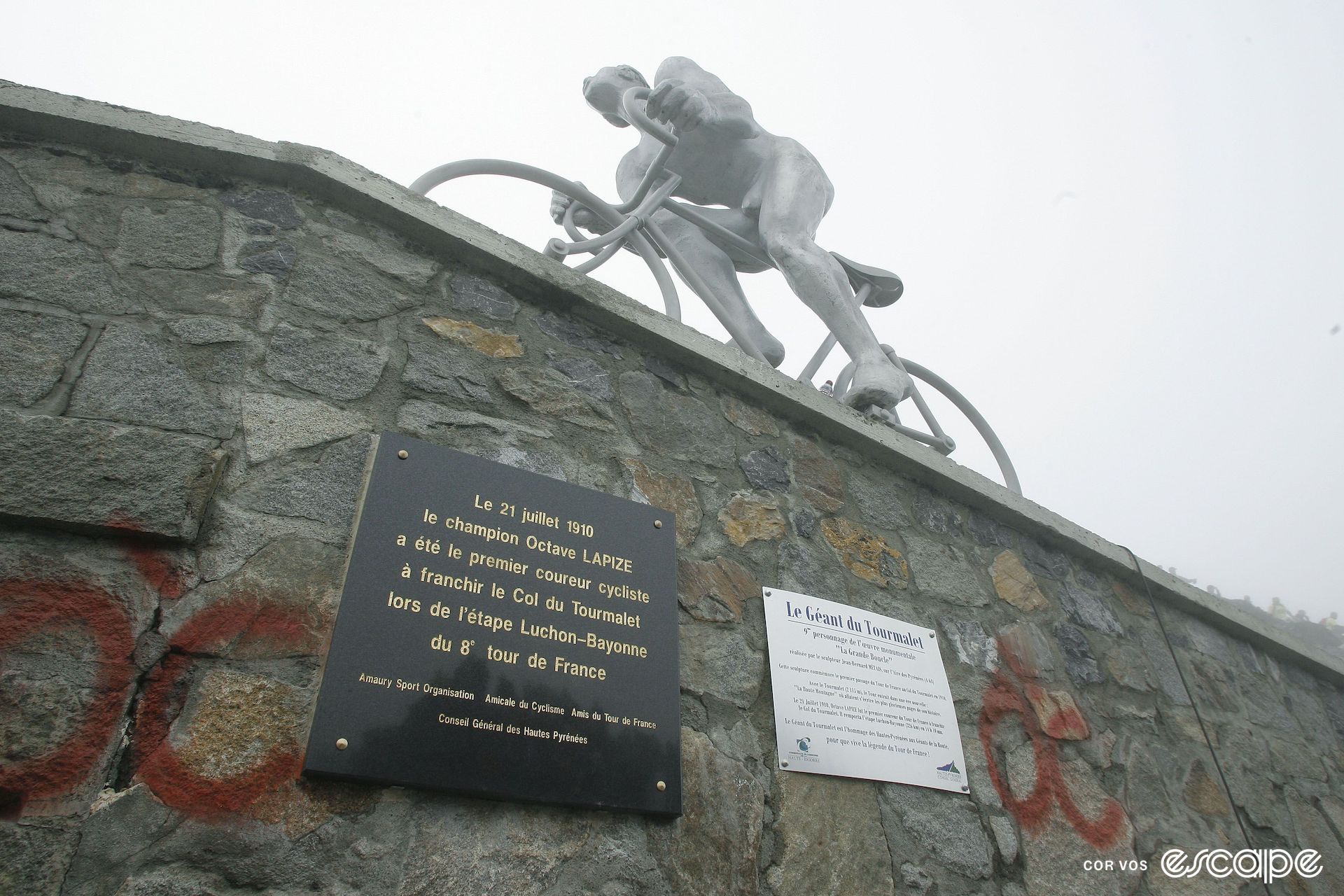For every stage of the 2023 Tour de France – men’s and women’s – José Been is bringing you stories about the history, castles, geology, culture, food, and people around the race. A bit of couleur locale while you enjoy lush fields of sunflowers, beautiful mountains, and pretty little villages, oh, and the bike race too.
Hello and welcome to the High Pyrenees. These mountains are here because of plate tectonics. Yeah, science! At first the Iberian plate moved away from the rest of Europe, towards North America. This even opened up an ocean where we now have the Pyrenees. When Iberia came back to the Eurasian plate the ocean closed and the two plates collided around 65 million years ago.
A long mountain chain formed at the boundary and that is now the Pyrenees. This dance of plates – the breaking, opening up an ocean, and coming back together in a continental collision along the same plate boundary – is called the ‘Wilson Cycle’. It’s not a special brand of bicycle. The Wilson Cycle is a concept of cyclical plate tectonics named after the pioneering Canadian geophysicist and geologist John Tuzo Wilson.
Let’s get back to the present, well 113 years ago because it was in 1910 that the Col d’Aspin and the Col du Tourmalet first featured in the Tour de France. The assistant to Tour de France race director Henri Desgrange travelled to the Pyrenees in January of that year to see if the roads were rideable. The locals laughed at this Alphonse Steinès character when he rented a car and drove up the Col du Tourmalet. He got stuck in the snow, continued on foot in four-metre-high snow and had to be rescued off the mountain in the middle of the night. Yet he sent a telegram to Desgrange in Paris that read: “Crossed Tourmalet. Very Good Road. Perfectly Passable. Signed Steinès.”
So, in the summer of 1910 the Tour de France went to the Pyrenees and up the Col d’Aspin, Peyresourde, Tourmalet, Soulor, Col de Tortes, and the Aubisque. In one day. The riders today have it easy.
After a stage of 326 km and just over 14 hours of racing, Octave Lapize beat Italian rider Pierino Albini in a two-up sprint. Lapize took 10 minutes on Francois Faber, his direct rival for the general classification. A few days after his heroic win in the Pyrenees but still in second place in the overall classification, Lapize managed to take 11 minutes back on Faber in a 391 km stage to Brest. Lapize took the yellow jersey which he kept to Paris that year.
It would be the only Tour de France Lapize would win. In the First World War he volunteered for the French Army and joined the air force. After years of training Lapize wanted to go to the frontline. He knew the dangers and had already drafted his last will and testament for his wife and young daughter Yvonne.
On 14 July 1917, Bastille Day, his plane was shot down by four German planes. He was rushed to hospital but succumbed to his injuries a few days later, just 29 years old.
François Faber – a French-born Luxembourger who was the first foreigner to win the Tour de France, in 1909 – also died in the first World War. He was part of the French Foreign Legion and was shot in 1915 while trying to bring a wounded comrade to safety.
What did you think of this story?

